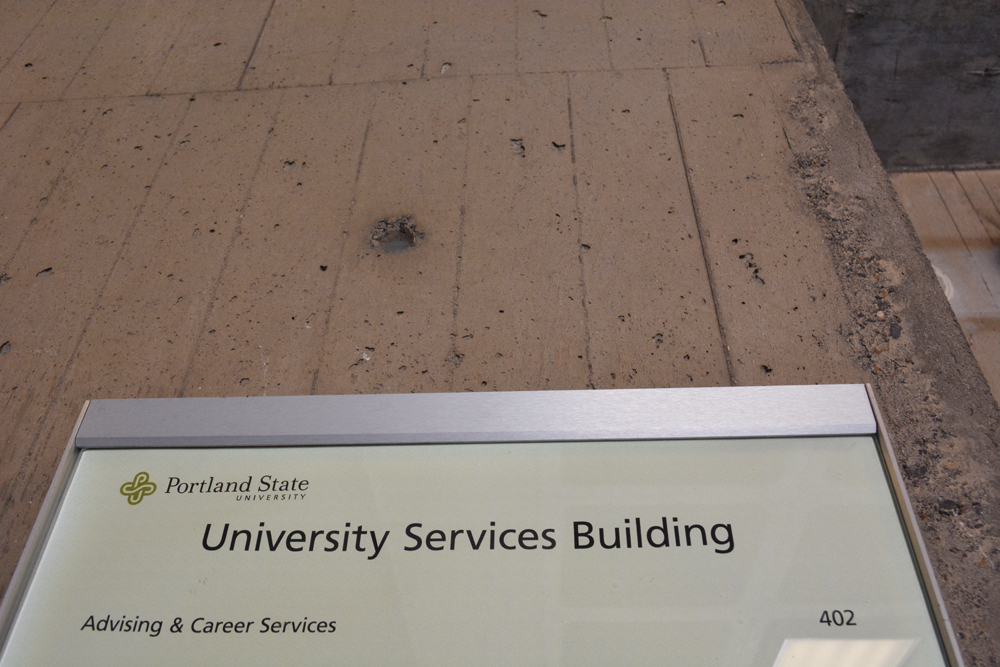After observing the Portland State men’s basketball team compete against Kansas last spring in the opening round of the NCAA Tournament, Scott Fabian knew that there was room for improvement in the strength and conditioning of Vikings athletes. Although the Jayhawks, the eventual national champions, featured five players that would be selected in the NBA draft and had a sizeable height advantage at every position, Fabian said the biggest difference between the two squads would be unmeasured on a basketball court.
Progress indicator
After observing the Portland State men’s basketball team compete against Kansas last spring in the opening round of the NCAA Tournament, Scott Fabian knew that there was room for improvement in the strength and conditioning of Vikings athletes.
Although the Jayhawks, the eventual national champions, featured five players that would be selected in the NBA draft and had a sizeable height advantage at every position, Fabian said the biggest difference between the two squads would be unmeasured on a basketball court.
“Those guys were amazing: they were big, they were noticeably stronger than us and they were monstrous forces,” said Fabian, the head strength and conditioning coach at Portland State, who works specifically with varsity athletes.
While the calmness of the summer months brings a welcome respite for many in the college environment, the off-season represents the period when nearly all of collegiate athletics try to take advantage of the lull by improving their respective teams for the next season.
Football coaches study game film, intent on learning more about their fall opponents. Basketball coaches travel extensively hoping to wow the next recruit. Facilities are often upgraded or remodeled.
But perhaps the most indicative sign of future success for a team is the improvement of their athletes’ strength and conditioning.
“It has become commonplace in collegiate athletics–you have to workout and stay in shape year-round,” Fabian said.
After arriving at Portland State in 2004, Fabian has helped the strength and conditioning program grow despite being limited by the facilities at the Stott Center. Fabian, with his two graduate assistants, coordinates the fitness of over 300 varsity athletes from inside an outdated, cramped and windowless room.
As common as strength training has become in college athletics, so too has the arms race to build bigger, brighter and more attractive weight rooms.
“We are constantly reminding the student-athletes the same thing that fans also struggle to remember–that there is no difference in what they are doing here than what they are doing in Eugene or at Oregon State,” Fabian said. “The facilities might be different but that shouldn’t change the effort or the enthusiasm.”
Fabian explained that bigger schools often overlook many of the athletes at Portland State because they are maybe an inch too short or not quite the right weight, but added that the weight room can help compensate for those weaknesses.
His message has hit home with many of the athletes that he works with, including Andy Schantz, a linebacker on the football team, Kelsey Kahle, a three-time all-conference performer on the women’s basketball team, and Tyrell Mara, a forward on the men’s basketball team.
All three of the student-athletes are entering their senior seasons and are counted by Fabian as some of the hardest workers in the South Park Blocks.
“We are going to work extremely hard this off-season,” Schantz said in May, following the completion of the Portland State spring football game. “The amount of work that we put forth will indicate our success next season.”
Although Fabian and his staff demand hard work from all of their athletes, the type of activities that he has them engaging in are dependent on the athletes themselves and the sports they play.
“Each team has a designed program that includes conditioning, weights and other strength-building exercises. But it can vary within the sport, we don’t want our quarterbacks doing the same lifts as our defensive lineman,” Fabian said.
After the women’s basketball team concluded their season, head coach Sherri Murrell and her staff asked Fabian to help the team improve their upper body strength to prevent them from being out-rebounded, as they were in several key games last year.
“There were times last season when we didn’t handle the physicality of the game well,” Murrell said. “I think Scott has done an excellent job of getting us in better condition to prevent that sort of thing.”
Fabian’s relationship with the student-athletes is particularly beneficial during the off-months of summer, when the NCAA limits the contact that coaches can have with their student-athletes.
“The players know that I am not limited, and they know that I am in contact with their coaches so they stay in line,” Fabian said.
Following that opening round loss suffered by the Portland State men’s basketball team, Fabian hopes that the real message is not lost on those wearing Vikings green.
“They had the complete physical package and I think a lot of our players saw that and took notice at how hard those guys must have worked to get to that point,” Fabian said. “It takes a lot of hard work to get your body to that point–hard work and dedication, and that’s what we need more of.”



